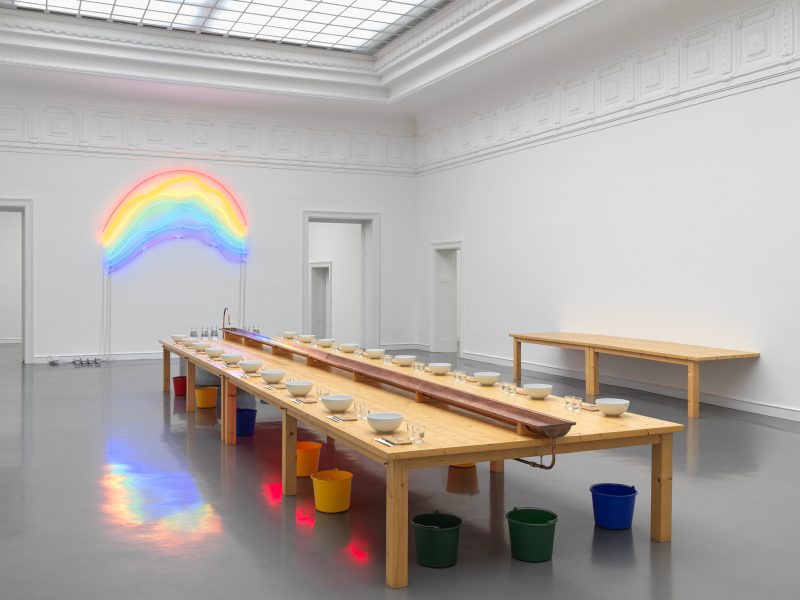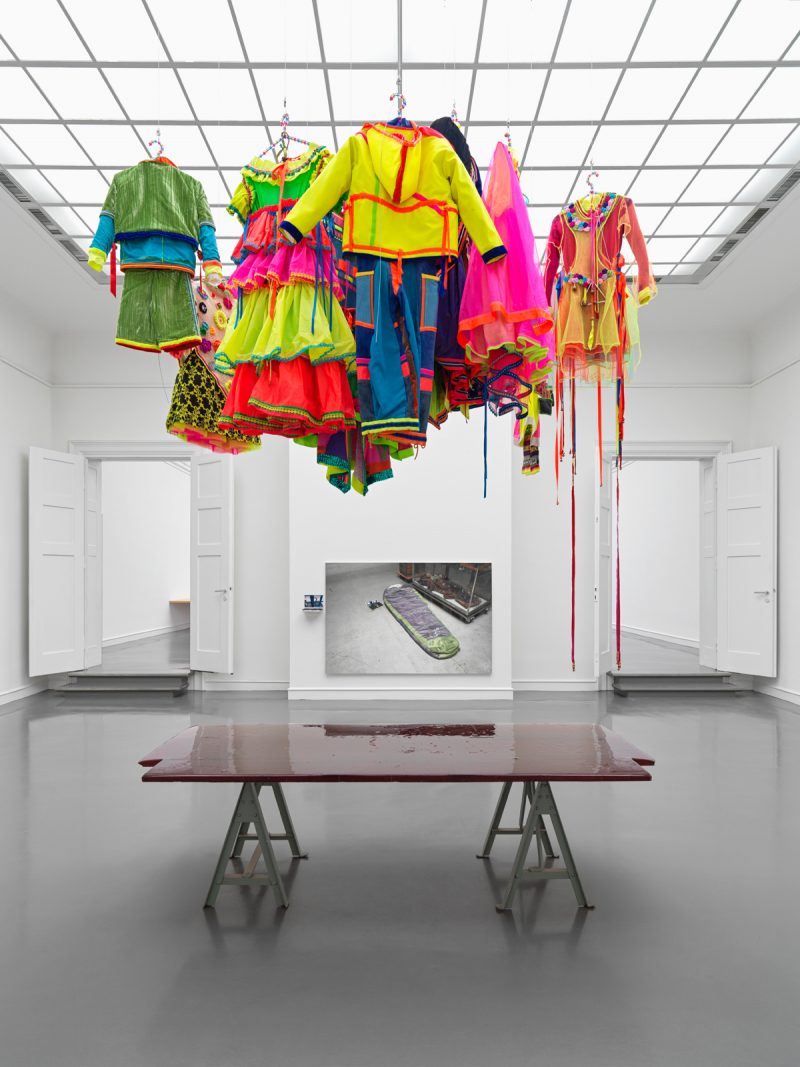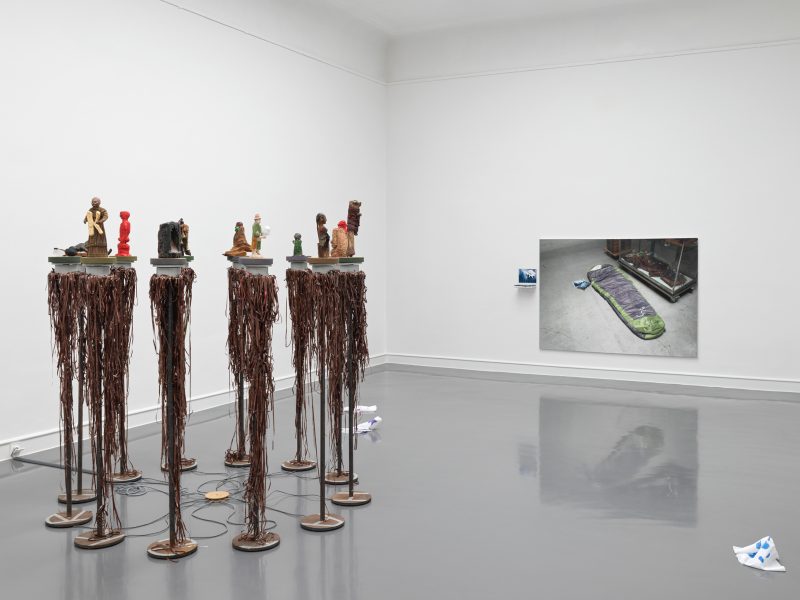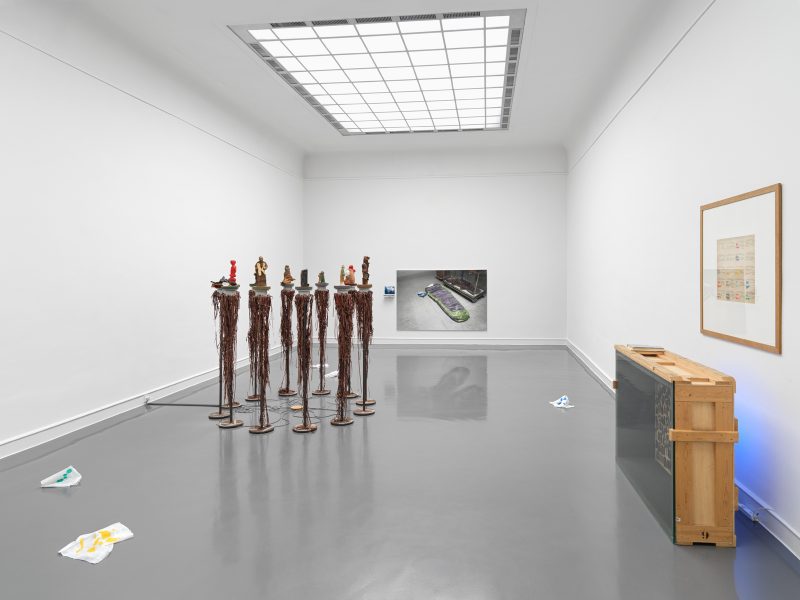SARKIS
7 Tage, 7 Nächte
Artist
- Sarkis
Curators
- Çağla Ilk
- Misal Adnan Yıldız
- Defne Ayas
Curatorial assistance
- Sandeep Sodhi
Thanks to
We would like to thank FRAC Alsace, Mamco Genève, FRAC des Pays de la Loire, Hessisches Landesmuseum Darmstadt and Nathalie Obadia Gallery for their generous loans and support in the realization of the exhibition.
The Staatliche Kunsthalle Baden-Baden is an institution of the state of Baden-Württemberg under the auspices of the Ministry of Science, Research and the Arts of Baden-Württemberg, Research and Art Baden-Württemberg.

Funded by the German Federal Cultural Foundation

Funded by the Federal Government Comissioner for Culture and the Media
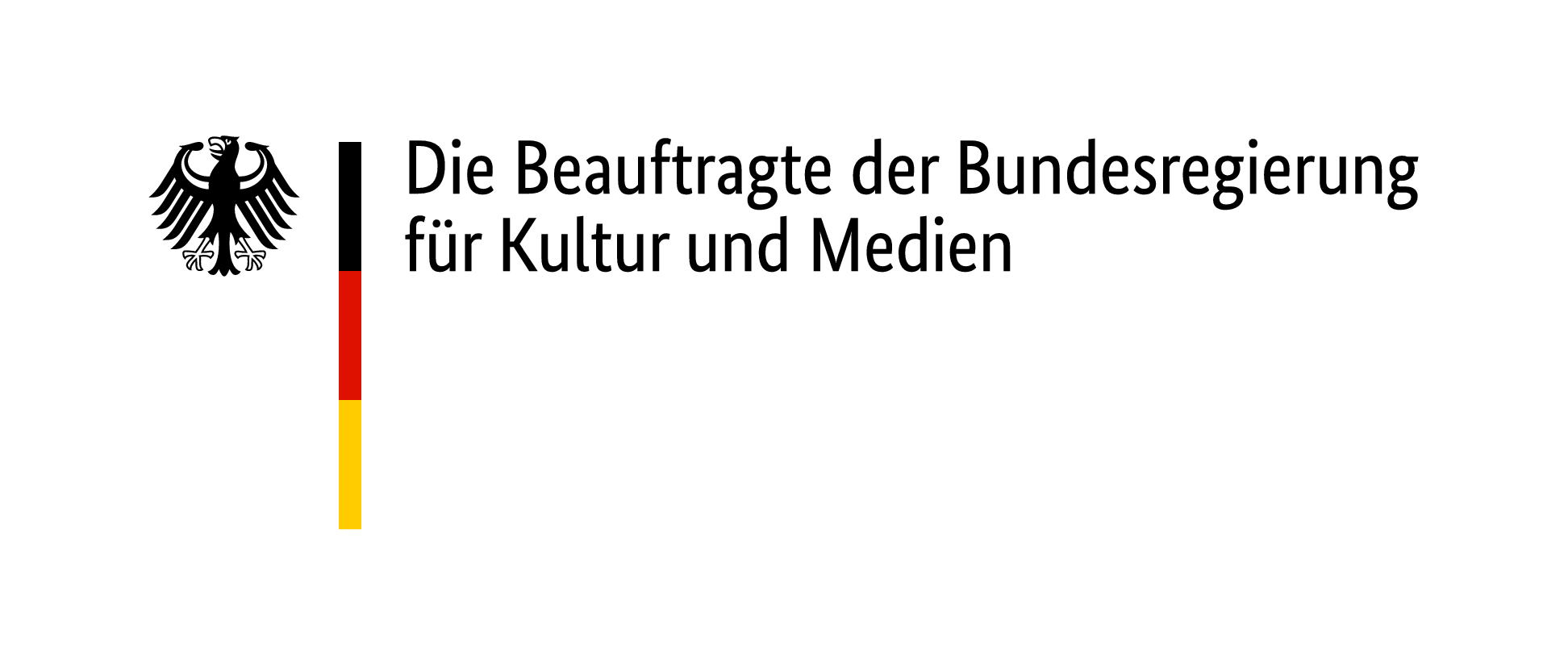
The Staatliche Kunsthalle Baden-Baden devotes a comprehensive solo exhibition to world-renowned conceptual artist Sarkis (born 1938 in Istanbul, lives and works in Paris), whose work profoundly links the social to the conceptual, calling for the merging of practices and cultures. The exhibition is the product of a year-long exchange with the artist, focusing on art, history, and trauma, and institutions as spaces for reflection, participation and community.
The exhibition title, 7 Tage, 7 Nächte (7 Days, 7 Nights), derives from the artist’s installation 7 Nuits (7 Nights, 2016–2019), which Sarkis considers to be one of his most important works until today. It consists of seven different multi-media compositions and a sleeping bag on the floor of the artist’s studio in Paris, in front of the work La grande vitrine (The Great Vitrine, 1982–2021). 7 Nuits is presented in an institutional context for the first time. As a poignant statement on the position of the artist today and transformative aspects of the politics and poetry of art, the work defines an intimate space for self-reflection and meditation as much as it confronts contextual aspects of living as an artist with resilience and resistance.
As a participatory artwork, L’atelier d’aquarelle dans l’eau (Aquarelle in Water, 2005–2006), transforms the Kunsthalle’s main exhibition space into a common ground and a conceptual stage. All visitors from age 7 to 70 are invited to participate in an ephemeral ritual based on watercolor and water. Water, a defining element of the city of Baden-Baden with its Oos river and thermal baths, provides the flowing link that organically enables working together, sharing, and creating intimate encounters and memories alike. Through water, Sarkis proposes attention and patience as fundamental aspects of learning together, with and through art, in the service of collective and personal healing.
The reciprocal activation of work and surroundings is continued in earlier works loaned from prestigious public collections, including Défilé du Siècle en Fluo (1995), a series of custom-made children's dresses. With a lucid conceptual choreography, the work evokes the remembrance of people from different parts of the world, costuming their bodies in different time periods, and how we imagine a future for our existence. In a city like Baden-Baden, with a significant percentage of seniors among its residents, this testimony manifests as childhood reminiscence, through neon colors and futuristic forms of abstraction, glowing with intensity.
It was Sarkis’ time in Germany that prompted the artist to think deeply about the oppressive and limiting logic of Western art and to develop the concept of "Kriegsschatz" (war treasure). Thus it is no coincidence that with this exhibition, the artist returns to the tripoint area where Germany, France, and Switzerland converge. In the vicinity of Baden-Baden, especially during his professorship at the art academy in Strasbourg and in close dialogue with artists like Joseph Beuys and Marcel Broothaers and art historians like Pontus Hultén, Sarkis systematized the search for non-Western objects in order to contextualize them as objets trouvés (found objects)—objects assembled and juxtaposed by the artist without losing their intrinsic meaning. Sarkis’ belief that objects have lives of their own—with unique stories of pain and suffering—ultimately led him to the term “Leidschatz der Menschheit” (humanity’s treasure of suffering), coined by the German art historian Aby Warburg. As such, he interprets human history as a collective treasure and burden, intertwining it with his own memories and life.
“We see our role at the Kunsthalle Baden-Baden as the continuous mediators of an open platform. History is never a completed process. As such, it is the material of our work and the foundation of our reality. We learn from Sarkis’ artistic practice, both in terms of human existence and ontological issues. The timeliness of staging this exhibition is not only linked to a new urgency in art production in view of the current wars in our world, it also substantiates the role of commemorative practices in the context of contemporary geopolitical developments. Especially in Germany, but also in a universal discursive framework, we support the deeper investigation of the generational, psychological, and social trauma of the victims of war, state violence and genocide, including the Armenian people… addressing this is an important step towards recognition, empathy, and remembrance. Art alone cannot solve our major problems, from climate crisis and environmental collapse to militarist gentrification and the politics of war, however, it changes our perspectives on how we react to them…” as directors Çağla Ilk and Misal Adnan Yıldız state.
Defne Ayas contributes with a further reflection: “Traumatic events—both personal and collective—are ever rife for exploitation, especially by politics. However, in the hands and visions of Sarkis, this human fragility moves beyond the economy of traumatic-cathartic loops and becomes a research cabal. I am proud that we can present this cinematographic montage at Kunsthalle Baden Baden that draws from Sarkis’ almost fifty-year-long commitment to the exploration of the term Kriegsschatz.”
In keeping with this modus operandi of artworks changing with the world, the Kunsthalle will hold incantations, meals and readings over seven days and seven nights during the exhibition period, as an interpretive gesture towards Sarkis’ constantly shifting compositions.
The exhibition has been staged by Sarkis in close collaboration with the Staatliche Kunsthalle Baden-Baden directors Çağla Ilk and Misal Adnan Yıldız together with curator Defne Ayas, and assisted by Sandeep Sodhi.
Curated program
Sarkis: L'atelier d'aquarelle dans l'eau
Watercolor rituals in the form of workshops
Artist talk
A Conversation between Sarkis, Defne Ayas, Çağla Ilk and Misal Adnan Yıldız
Live-Readings
With David Kazanjian and Lara Fresko Madra
Les Anonymes / The anonymous / Die Anonymen / Sine nomine / Ανώνυμος - Keynote
A weekend about anonymity, invisibility and publicity
Les Anonymes / The anonymous / Die Anonymen / Sine nomine / Ανώνυμος - Day 2
A weekend about anonymity, invisibility and publicity
Closing Weekend Sarkis - 7 Tage, 7 Nächte
With Silvina Der Meguerditchian and Marc Sinan
